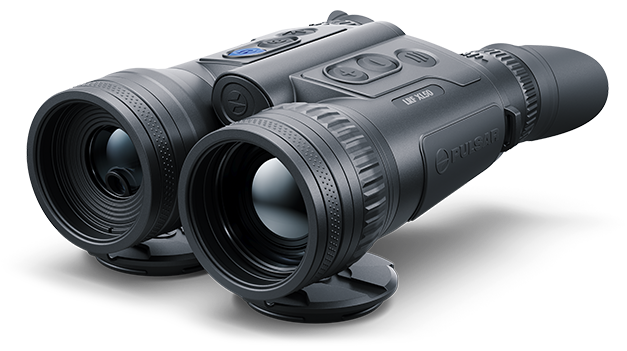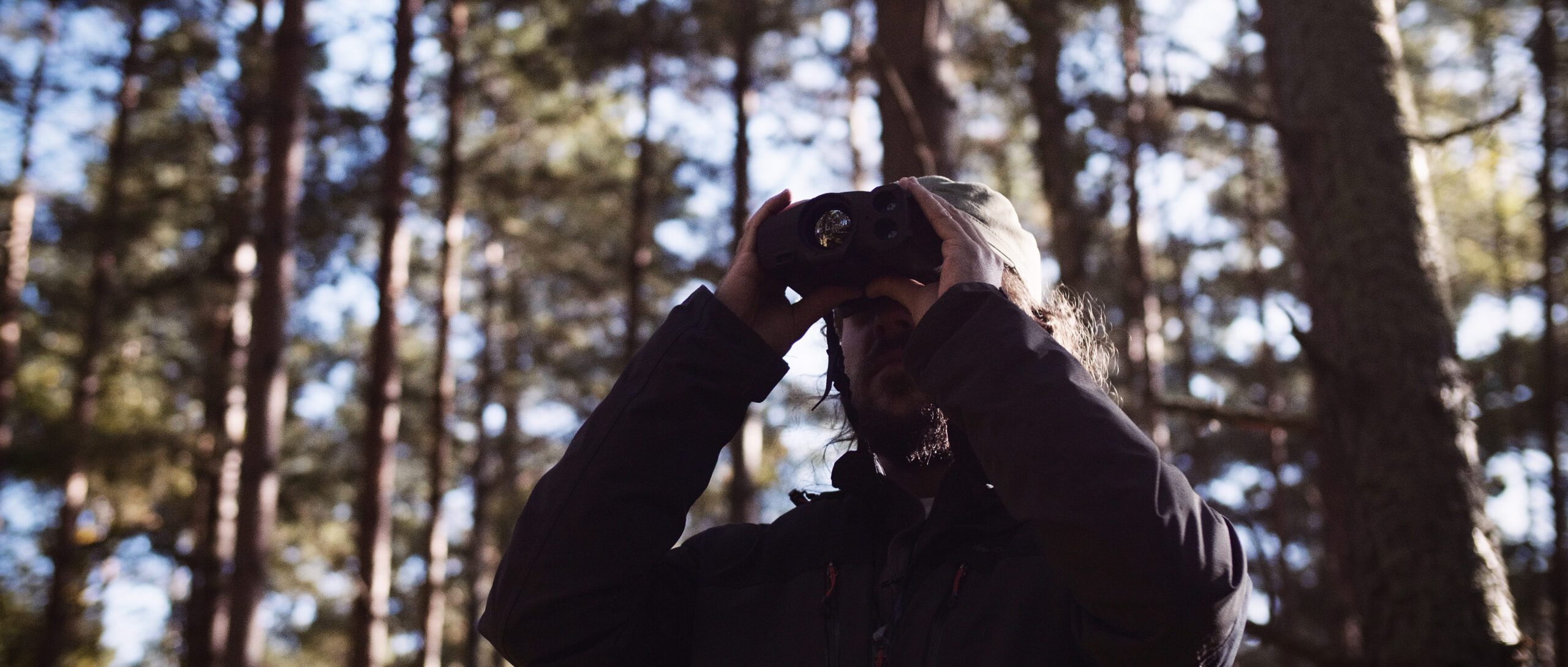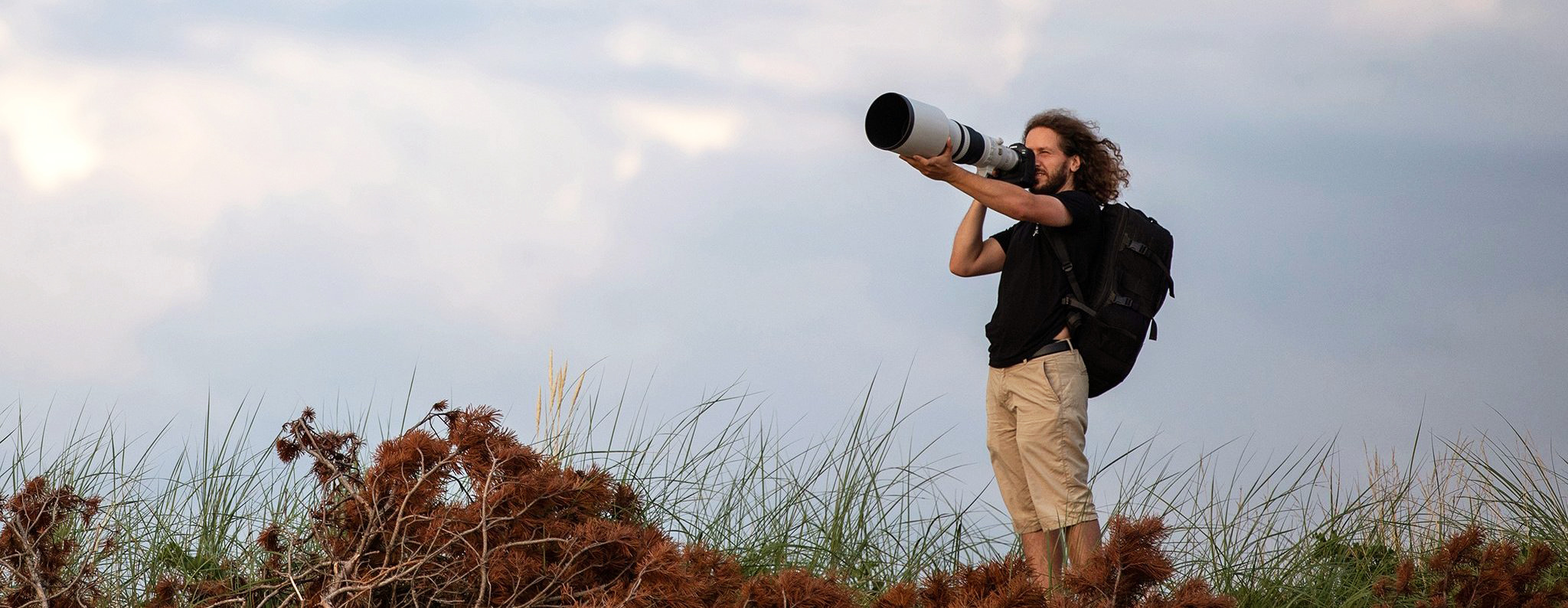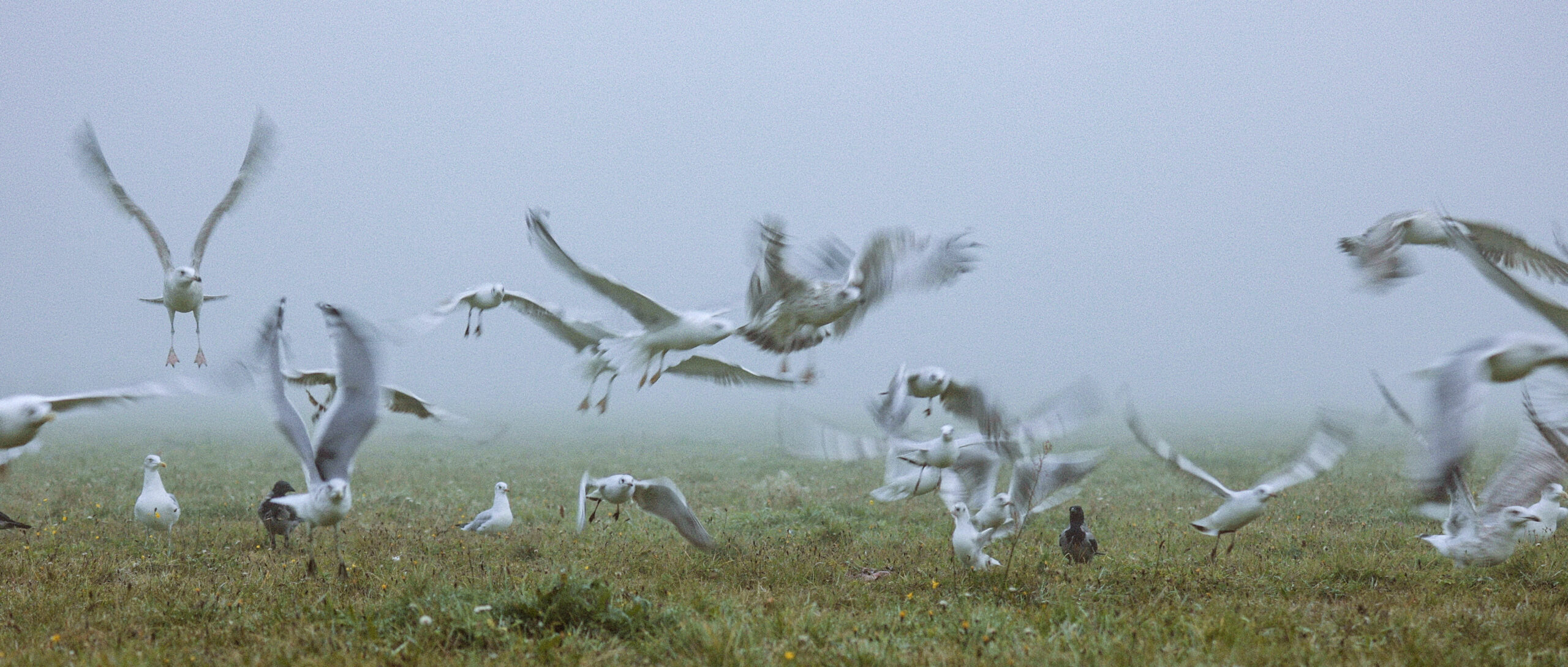
You might be familiar with Boris Belchev already – he’s a birder from Lithuania and one of the first to use thermal imaging technology to make his job more efficient. Recently, we equipped him with the Pulsar Merger LRF XL50 – our HD resolution thermal imaging binoculars. Now, it’s time to see how they perform in this slightly less usual setting.
Let’s start with some context. How do you use the Pulsar Merger LRF XL50?
Mostly for work, when guiding tour groups. For example, I recently had a tour in the Curonian Spit, where we were looking for moose. I had made a handle for the binos for more convenient holding. I gave it to one of my guests, tuned into the Stream Vision 2 app, and we could see what’s around better. This way, we found many objects to observe later or take pictures of.
I also use my Merger to look for sea ducks. Previously, I would have had to use a large searchlight because these birds sleep on water. Now, I can swim close to them without using the light and only turn it on to catch the ducks. This season, I’ve caught all the sea ducks using my Merger.
Is thermal vision common among your colleagues? Do they use the technology for work, too?
Some of my colleagues have a project with the Eurasian eagle owls, looking for their nests in the forest. First, I showed them my Accolade, and when they found out about the Merger, they immediately ordered the binos.
The device helped them to find a few couples of Eurasian eagle-owls, which they would have missed otherwise. So, they are using Merger for scientific purposes.
I, too, spotted one in Bulgaria – it was on a cliff, and you could only see its eye. If it hadn’t been for Merger, there is no way we could have seen it.
What would you name as the biggest advantages of Merger thermal imaging binoculars?
My favorite thing, and the reason I wanted them in the first place, was the option to zoom in. Compared to Accolade, the zooming options are great, and I see this as the greatest advantage. When zooming in, I can see a more detailed image and easily recognize smaller objects.
Ergonomics are another plus. Now, this device is a real pair of binoculars. Accolade was sort of a cubic device, but Merger is a truly ergonomic unit. I also like the opportunity to change the battery.
Then, there is the laser rangefinder – I use it to measure distances when birds are further away. Recently, I got curious to find out how far I could spot an Eurasian eagle owl. It turned out to be 200-300 meters.
Finally, it’s much sturdier. I use it in any conditions – rain, storms, blizzards – and it works just fine.
Do you use it for long periods of time?
In the fall, I was participating in long-eared owl banding and had to spend 4 hours straight watching them to avoid missing the moment when they flew into the nets. My eyes didn’t tire, and the recordings were amazing.
Which color palettes do you use the most?
Mainly Hot Black and Hot White. If the surroundings are really contrasting, I choose the Red Hot mode so everything is black and white, and the warmest objects are red. Once, I recorded how two rivers merged and used Rainbow for this. Clearly, one was slightly warmer than the other, and it looked amazing.
Have you made any other amazing recordings?
Many! For example, I once spotted the great snipes mating. These birds are nocturnal and quite rare to spot, and I could even zoom in on the process thanks to the higher resolution. And their mating process is exciting – they puff out their chests, wave their wings, and then do some dancing. I’m thrilled to have caught that on record.
I also hope to spot an Eurasian pygmy owl or boreal owl this coming spring, as they are quite rare owls to spot.
Spotting rare birds is your specialty. Do you find many of them here in Lithuania?
Just recently, I was checking out a bird list, and there are 406 species. I’ve spotted 300 in Lithuania. So I’ve still got a lot to see! Of course, some of these species have only been spotted once, and I only saw some thanks to GPS tracking; otherwise, I wouldn’t even know they live in Lithuania.
My favorite thing, and the reason I wanted the Merger LRF XL50 in the first place, was the option to zoom in.
Boris Belchev

On that note – Lithuania isn’t the only country you do birding in. How does it compare to others?
In Bulgaria, there are many hatching birds that you can only see in very rare cases in Lithuania. In Norway, you can observe birds you’d only see during the migration in Lithuania or Bulgaria.
Anyway, the best places for birding, I think, are up North. There, birds aren’t used to seeing people and aren’t afraid of them.
For example, here is how you spot a common buzzard in Lithuania. You see a bird of prey sitting next to a road. You start slowing your car down, and it flies away immediately, even if you don’t get out of it.
Meanwhile, the rough-legged buzzards who come here from the North to spend winters are much more chill. You could literally drive up to them, and they wouldn’t care.
I recently spotted an Eurasian eagle owl in Bulgaria – it was on a cliff, and you could only see its eye. If it hadn’t been for Merger, there is no way we could have seen it.
Boris Belchev
Before purchasing any night or thermal vision device, please make sure you adhere to the local legislation and only use it when it is allowed. Our ambassadors come from various countries and travel a lot, which allows them to test different devices. We do not encourage or support the illegal use of our devices in any events. If you wish to learn more about export and sales restriction policy, please visit the following link: Export and Sales Restriction Policy.



